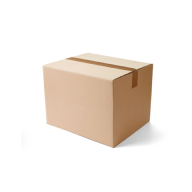Nitrilite 93-311
5.0 / 5
Product description
Description
Assured cleanliness: Nitrilite™ 93-311 non-sterile gloves are specially designed for compatibility with Class 100 (ISO 5) cleanroom environments
Reduced allergy risks: These cleanroom gloves are also free from latex proteins and chemical accelerators, reducing the susceptibility to Type I or Type IV allergic reactions
Heightened tactility: Thanks to their optimally thick design, these silicone-free gloves ensure high levels of tactile sensitivity, making them ideal for precision handling
Recommended for
Clean room cleaning and preparing
Blending, compounding solids and liquids
Spill or leakage cleanup
Transferring liquids and solids
Loading centrifuges and chromatography columns
Assembly of parts
Weighing and dispensing of solid and liquid raw materials
Product Details
Antistatic: Yes En1149
Available Sizes: Xs (5.5 - 6), S (6.5 - 7), M (7.5 - 8), L (8.5 - 9), Xl (9.5 - 10)
Cleanroom Class: Class 100/Iso 5
Color: Natural
Cuff Length: Extended
Cuff Style: Beaded
External Glove Surface: Textured Fingers
Freedom From Holes (Inspection Level I): 2.5 Aql
Glove Length (Mm/Inches): 300 / 12
Internal Glove Surface: Powder-Free, Chlorinated: Material: Nitrile
Shape: Ambidextrous
Sterile: No
Tested For Use With Chemotherapy Drugs: No
Palm Thickness (Mm/Mil): 0.10 / 3.9
Finger Thickness (Mm/Mil): 0.13 / 5.1
About Cleanroom Gloves
Cleanroom Gloves provide essential hand protection in controlled environments where contamination prevention is critical. Made from low-particulate materials, these gloves offer excellent dexterity while maintaining cleanroom integrity. Ideal for electronics, pharmaceutical, and laboratory applications requiring strict contamination control.
- Clean Room
- Food Service
- Electrical Protection
- Hand Protection
Standards and labels
Ansell delivery terms
Free delivery for all Ansell products
2 469,33 kr
Price per 10 packages (1 000 pairs)
2,47 kr / pair
Free delivery
A carton contains 10 packages (1 000 pairs)



